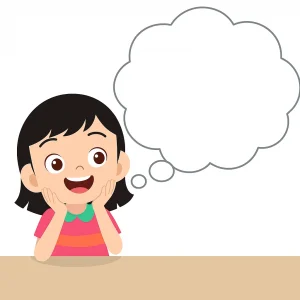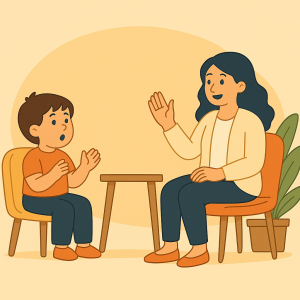Anger Management for Children
Last Updated: November 26, 2021
Anyone can become angry and that is easy. But being angry with the right person, to the right degree, at the right time, for the right purpose, and in the right way this is the main concern, which is not easy. Anger is like any other normal human emotion and can range from mild irritation to an intense rage or fury. Your mood can be affected by a lot of stuff you can’t control: friends, your family, even the weather. If feeling angry and acting angry are two different things, what would you like to do to handle the way you act? Well, first you need to know what makes you angry. And then, techniques of anger management.
Everyone has things that make them angry. Anger can be the result of hurt pride, of unreasonable expectations, or of repeated hostile fantasies. One may unconsciously use one’s anger to blame others for their own shortcomings, to justify dominating others, to conceal other feelings and also to handle other emotions. Anger has the potential to do more harm than any other emotion. First of all it is very common and secondly, it upsets at least two people who are the targets of anger to get angry in return. You can reduce or manage anger.

The behavioural signs showed by people when angry are as given below.
- Doubtful
- Argumentative
- Irritable
- Indirectly challenging
- Jealous
- Envious
- Uncooperative
- Distracting actions
- Unforgiving
- Unsympathetic attitude
- Sulky
- Passively resistant
- Interferes with progress
- Cynical humour and teasing
- Judgmental
- Having superior attitude.
Anger management – What can be done?
Your behaviour affects the way people think about you and react to you. You can manage by thinking about the positive things you can do when you are angry. Anger management does not mean holding anger in or that you will never feel angry. Anger management is managing the behavioural responses that can usually arise when you are feeling angry. Managing your anger in a healthier way can help you look after your psychological and physical health, feel more positive about you, achieve your goals, solve problems and enjoy relationships with the people around you.
Prevent your anger before getting into trouble of unhelpful thoughts and misbehaviour. Know yourself. That is the key to prevent anger. Nobody can make you angry without your consent. You cannot change others as easily as you can change yourself. Do important jobs now before they become urgent. When you make mistakes, learn from them rather than getting angry. Ask even stupid questions to avoid mistakes to further avoid others getting angry with you. Say sorry at the right moment to reduce the anger of others.
Focus on self:
Nobody can make you angry without your consent. Make common sense your best friend to reduce your anger and the anger of others. Indecision makes you angry. Therefore, decide this way or that way. If all else fails, lower your standards to make you less angry. You cannot change others as easily as you can change yourself. Do not just catch your friends or your siblings doing wrong things; it will make you angry. Catch them doing right things. Use humour to help yourself face anger more constructively. Don’t give in to harsh, sarcastic humour; that’s just another form of unhealthy anger expression. Make sure you have some “personal time” scheduled for times of the day that you know are particularly stressful. After this brief quiet time, you feel better to handle your work.
If you learn positive ways to express your anger, you won’t get into trouble for misbehaviour. Watch a relaxing or funny video. Anger management helps to improve your social interactions.
Respond instead of reacting. Count from 10 to 1.
Draw a picture that expresses your feelings. Do something, like playing a sport or a game that will take your mind off what is making you angry. Listen to music. Find something to laugh about. Take five deep breaths. Sit down and relax your muscles. Think of what is bothering you as a problem you can solve. Find a trusted person to talk to about what is bothering you. Get a hug or give a hug. Jump up and down for a minute. Think of a peaceful place or look at a picture of your peaceful place. Listen to music or play music on an instrument. Sing a song. Talk yourself into being calm: say, “Be calm, be calm” or “I can handle this”. Feel your pulse, tense and relax your muscles, visualize yourself calming down.
Distract yourself:
Distract yourself or take yourself out of the situation that made you angry. Do a crossword. Get a drink of water. Redirect your energy into another creative activity. Pour out how you feel in writing. All you really need to do right now is take a few moments just to relax, for you, to help you feel relaxed and calm. It feels good to relax. Relaxation is a main step for anger management,
After this short relaxation session is over, you can proceed with your day, and react in a way that you choose…. relaxing for a moment now will help you to react calmly, rather than acting out of emotion. It’s okay to be angry. Just allow yourself to feel however it is you are feeling right now, noticing this feeling, but not reacting just yet. All you’re doing is observing. Emotions are neither right nor wrong… they just are.
Breathe
Take a deep breath in. Hold for a moment, and now breathe out. Breathe in… hold that tension…. and now breathe out…. feeling the tension release with your breath. Breathe in…. and out……. Handling your breath helps in anger management.
Keep breathing like this, slowly…. deeply…. and let your body relax a little. Turn your attention again to how you are feeling. Notice the physical sensation of anger. Where in your body is the anger stored? Some people notice that they tighten their shoulders when they are feeling angry. Others who deal with anger notice clenched fists or tight jaws. Anger may be experienced as a feeling in the stomach…. the neck…. any one or a number of places in the body demonstrate physical symptoms of anger.
Address the physical symptoms:
Many of these physical symptoms are uncomfortable. Some of these symptoms can be relieved right now, if you like, by relaxing your muscles. Let’s relax a few areas to begin this process to deal with anger by relaxing your muscles. Starting with your hands and arms, first tighten your hands into fists. Feel the tension in your hands and arms. Hold…. tighter…. and relax. Let go, allowing your hands and arms to be relaxed, and loose. Notice the difference between tension and relaxation.
Now create a feeling of relaxation in your shoulders. Take a moment to relax your shoulders now. Simply relax your shoulders without tensing them first. Then tighten the muscles, and then relax. Focus now on your face and jaws. Relax your face and jaws, tensing first if you want to. Let all the tension leave your face….. Let the tension leave your jaws…. leaving your face and jaws limp, smooth, and relaxed.

Scan your body now, for remaining areas of tension. Relax each area that feels tense…. scan your body from head to toe…. relaxing each part of your body.
(pause)
Notice how you are feeling now. Physically. Emotionally.
You are controlling anger right now, just by the fact that you have not yet reacted with angry behaviours. You have chosen to relax, to deal with anger in a healthy way. To increase the control you have over anger, imagine that you are feeling anger right now and accept the way you feel. Imagine that you are gaining power to control your reactions. Now you are fully experiencing anger and you are waiting to take action. You are calm and in control at the same time.
How are you, Physically?
Notice again how you are feeling. Physically, how are you feeling? Let your body relax a little more… relaxing any tense areas. Emotionally, how are you feeling? Observe how emotions come and go…. anger can come and go…. it will not last forever. There is a limited time where you exercise self-control, before the anger is no longer an issue.
You may feel less angry… just as angry… or angrier now, than you were at the beginning of this relaxation session. To deal with anger that may remain, you may need a way to express the anger and get it out. You do not have to keep your emotions inside… you can choose how to express them. Anger management is not about containing anger, it about finding a healthier way to express.
Anger management – Let it out:
You can let anger out by breathing deeply…. breathing in relaxation, and breathing out anger…. letting anger go with each breath. After the anger has decreased and you are feeling calm, you may choose to address the situation that was upsetting by taking action to change the situation, or speaking to the person you were upset with. Or you may just choose to let the situation go. Once your anger has decreased you can choose whatever option seems best. You have the right to feel a range of emotions, including anger, and to express these emotions in healthy ways that you choose.
Now take a deep breathe in…. and out…. relaxing with each breath. Take a deep breathe in….. and out…. Breathe in….. and out…. Keep breathing deeply to deal with anger and feel relaxed and calm. Appreciate yourself for dealing with anger with relaxation. I’ll count now from 5 to 1. Imagine that right now, you are at a 5 and that when I reach 1 you will be feeling awake and alert, yet calm,
peaceful, and relaxed. 5…4…3…2…1
FAQs on Anger Management and Relaxation Techniques
1. What is the main concern when it comes to managing anger effectively?
- The main concern in managing anger is being angry with the right person, to the right degree, at the right time, for the right purpose, and in the right way, which is not easy.
2. What is anger, and how does it vary in intensity?
- Anger is a normal human emotion that can range from mild irritation to intense rage or fury.
3. What factors can affect your mood and trigger anger?
- Various factors, including friends, family, and external circumstances like the weather, can affect your mood and trigger anger.
4. How can I handle my actions when I feel angry?
- To handle your actions when angry, you need to first identify what makes you angry and then employ anger management techniques.
5. What are some common causes of anger?
- Anger can result from hurt pride, unreasonable expectations, or repeated hostile fantasies. It’s also used unconsciously for various purposes, such as blaming others and concealing other emotions.
6. Why is it important to manage anger effectively?
- Anger has the potential to do more harm than any other emotion. Managing anger helps you maintain psychological and physical well-being, achieve your goals, solve problems, and improve relationships.
7. What are some common behavioural signs of anger?
- Common behavioural signs of anger include being argumentative, irritable, uncooperative, and judgmental, among others.
8. How can I manage my anger in a healthier way?
- You can manage your anger in a healthier way by focusing on positive actions when you’re angry. Anger management does not mean suppressing anger but rather managing the behavioural responses that arise when feeling angry.
9. What are some tips to prevent anger and unhelpful thoughts?
- Tips to prevent anger include knowing yourself, not letting others make you angry without your consent, and learning from mistakes. Asking questions, saying sorry when needed, and using common sense can also help.
10. How can humour be used constructively to deal with anger?
- Humour can be a helpful tool to face anger constructively. However, it’s essential to avoid harsh or sarcastic humour, as it can exacerbate anger.
11. What are some relaxation techniques to manage anger?
- Relaxation techniques for anger management include deep breathing, muscle relaxation, and mental imagery. These techniques help reduce physical tension associated with anger.
12. How can I express anger in a healthy way?
- Expressing anger in a healthy way involves acknowledging your feelings and choosing how to express them positively. Techniques such as deep breathing, discussing the issue, or taking positive action can be helpful.
13. What should I do if I find it challenging to manage my anger?
- If you have difficulty managing anger, it’s advisable to seek help from a qualified expert who specializes in anger management. They can provide guidance and support tailored to your needs.
14. How can I use deep breathing to control anger?
- Deep breathing involves taking slow, deep breaths to relax your body and mind. It can help reduce anger by releasing tension and promoting a calm and controlled response to anger triggers.
15. Can relaxation techniques benefit both physical and emotional anger?
- Yes, relaxation techniques can benefit both physical and emotional aspects of anger by helping you remain calm, observe your emotions, and respond thoughtfully.
16. Are there any physical symptoms associated with anger?
- Yes, physical symptoms of anger can include tightened shoulders, clenched fists, and tight jaws, among others. Different people may experience anger differently.
17. How can I release physical tension associated with anger?
- You can release physical tension by consciously relaxing various muscle groups in your body. This process helps alleviate physical symptoms of anger.
18. What is the importance of observing emotions when managing anger?
- Observing emotions allows you to acknowledge and accept how you feel. It’s a crucial step in controlling anger and responding to it in a healthy manner.
19. How can I let go of anger through deep breathing?
- Deep breathing can help you let go of anger by inhaling relaxation and exhaling anger with each breath. This process promotes a sense of calm.
20. How can I choose the best course of action after anger has decreased?
- Once your anger has decreased, you can choose to address the situation that upset you, take action to change it, or decide to let it go. The choice depends on what seems best in the given circumstances.
About the Author:
Dr. Aruna Sri Sikha, Consultant Psychologist
Aruna Sri Sikha is a seasoned psychologist with over eleven years of rich and diverse experience, having honed her skills in hospital settings, consultation clinics, Indian Navy Family clinics, and counseling centres. Throughout her career, she has been dedicated to providing therapeutic services, offering support and guidance to individuals grappling with a spectrum of psychological challenges. Aruna specializes in addressing issues ranging from coping with chronic illnesses and stress-related concerns to navigating strained relationships and common mental health disorders like depression and anxiety. In addition to her clinical expertise, she shares her knowledge as an assistant professor of psychology, contributing to the education and growth of future mental health professionals. Aruna’s holistic approach and wealth of experience make her a trusted ally in the journey towards mental well-being.
Book your Free Consultation Today
Parent/Caregiver Info:
Client’s Details:
* Error Message







